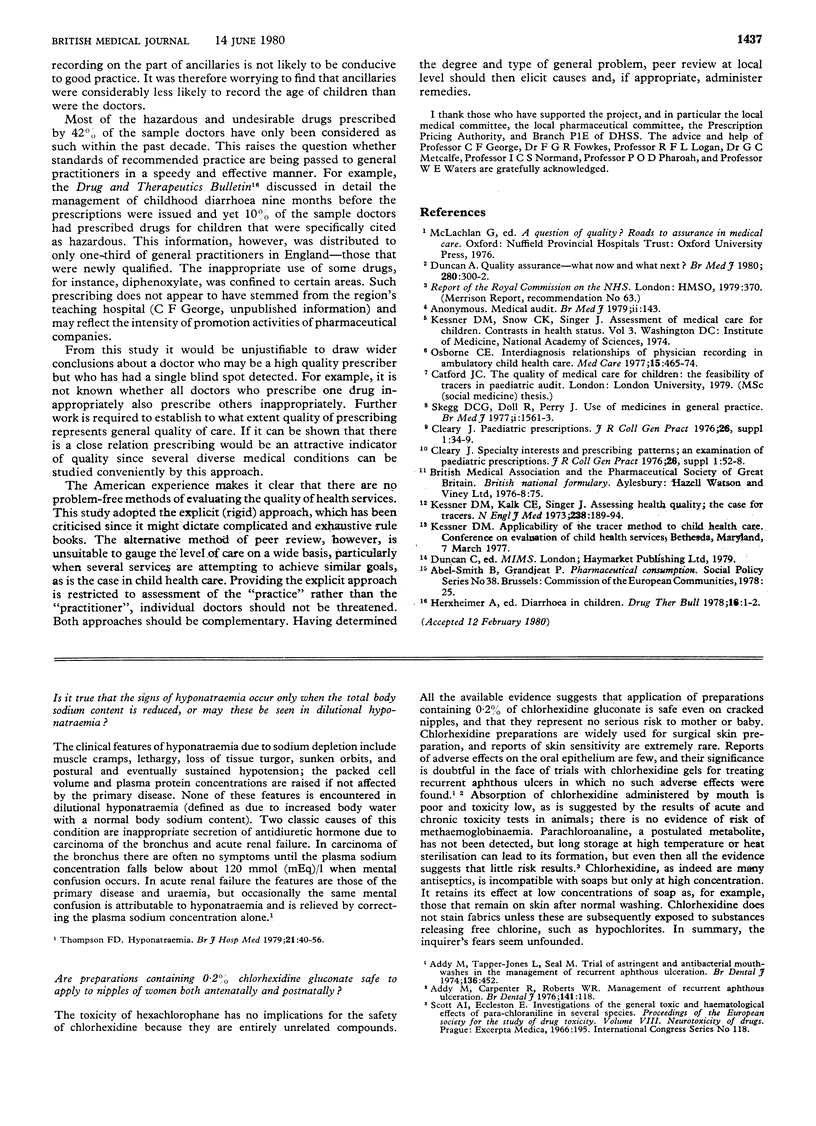Abstract
In a feasibility study of how often doctors prescribe drugs inappropriately for children 6331 FP10 forms issued to children in September 1978 by a random sample of 72 general practitioners in Wessex were examined. Prescriptions for drugs long known to be contraindicated in children--for instance, chloramphenicol, barbiturates, tetracyclines, and those with effects on appetite--were not encountered. Most scripts were for one drug only. Only about 1% (80/6331) of prescriptions could legitimately be called into question on the basis of current modern specialist teaching, although 42% of the doctors used drugs that have recently been considered to be hazardous or undesirable. These were predominantly drugs to control the symptoms of diarrhoea, vomiting, and enuresis. It is concluded that aspects of prescribing for children are responsible in the main but that there is a lag in the availability or use of important information relevant to general practice. The approach used in this study is applicable to many other areas of clinical practice and does not threaten individual doctors. It may prove to be a convenient way of assessing the general quality of medical care for children.
Full text
PDF


Selected References
These references are in PubMed. This may not be the complete list of references from this article.
- Addy M., Carpenter R., Roberts W. R. Management of recurrent aphthous ulceration. A trial of chlorhexidine gluconate gel. Br Dent J. 1976 Aug 17;141(4):118–120. doi: 10.1038/sj.bdj.4803798. [DOI] [PubMed] [Google Scholar]
- Addy M., Tapper-Jones L., Seal M. Trial of astringent and antibacterial mouthwashes in the management of recurrent aphthous ulceration. Br Dent J. 1974 Jun 4;136(11):452–455. doi: 10.1038/sj.bdj.4803212. [DOI] [PubMed] [Google Scholar]
- Duncan A. Quality assurance: what now and where next? Br Med J. 1980 Feb 2;280(6210):300–302. doi: 10.1136/bmj.280.6210.300. [DOI] [PMC free article] [PubMed] [Google Scholar]
- Kessner D. M., Kalk C. E., Singer J. Assessing health quality--the case for tracers. N Engl J Med. 1973 Jan 25;288(4):189–194. doi: 10.1056/NEJM197301252880406. [DOI] [PubMed] [Google Scholar]
- Osborne C. E. Interdiagnosis relationships of physican recording in ambulatory child health care. Med Care. 1977 Jun;15(6):465–474. doi: 10.1097/00005650-197706000-00002. [DOI] [PubMed] [Google Scholar]
- Skegg D. C., Doll R., Perry J. Use of medicines in general practice. Br Med J. 1977 Jun 18;1(6076):1561–1563. doi: 10.1136/bmj.1.6076.1561. [DOI] [PMC free article] [PubMed] [Google Scholar]
- Thompson F. D. Hyponatraemia. Br J Hosp Med. 1979 Jan;21(1):46–56. [PubMed] [Google Scholar]


